Common Grounds
Our Friday News Analysis | What the World Reads Now!
Helping to Heal a Broken Humanity (Part 59)
The Hague, 7 October 2025 | If you know of a decisive story, tell the world! We're still searching
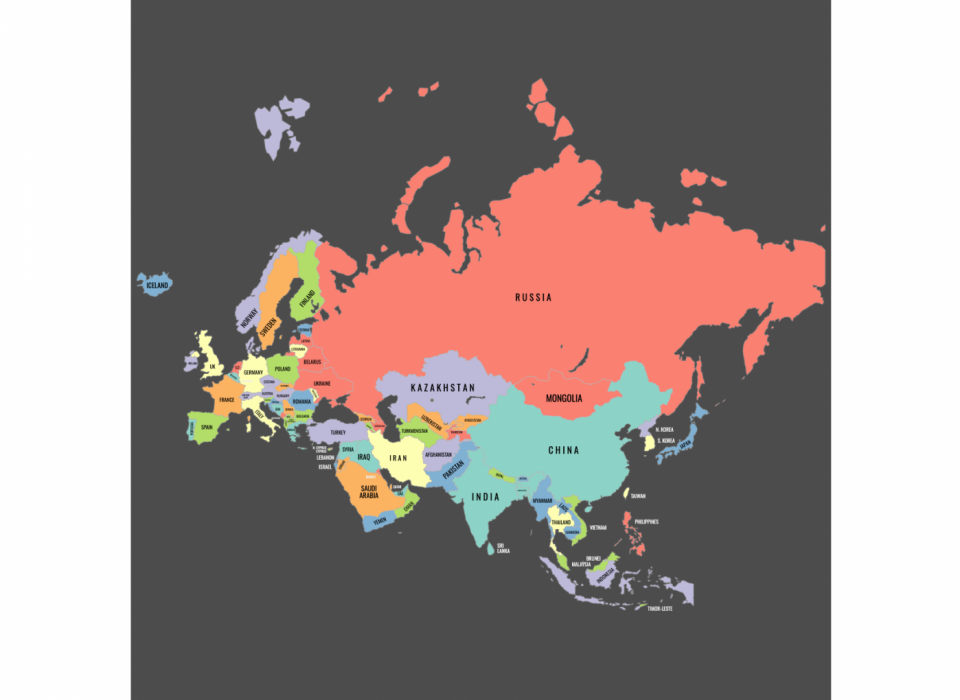
Eurasia (/jʊəˈreɪʒə/ yoor-AY-zhə, also UK: /-ʃə/ -shə) is the largest continental area on Earth, encompassing all of Europe and Asia.[2][3]
Eurasia's geopolitical landscape is shifting from Western dominance and divide-and-rule tactics. With more cooperation among Russia, China, and regional organizations, the region is moving toward a multipolar power structure with shared influence and mutual interests.
Eurasian integration should strike a gentle balance between strength and openness, avoiding dominance and maintaining a friendly attitude towards the West.
Instead of sticking to bloc politics, it’s better to encourage harmonious, multipolar alliances that genuinely consider the interests of all regions – Western Europe, Eastern Europe (including Russia), Southern Europe, the Sub-Continent (India, Afghanistan, Pakistan, Iran), the Middle East, and North Africa —creating a sense of shared progress and mutual respect.
EDITORIAL | “The Best Way to Predict the Future is to Create It" (Part 23)
Click here for Part 1
Click here for Part 2
Click here for Part 3
Click here for Part 4
Click here for Part 5
Click here for Part 6
Click here for Part 7
Click here for Part 8
Click here for Part 9
Click here for Part 10
Click here for Part 11
Click here for Part 12
Click here for Part 13
Click here for Part 14
Click here for Part 15
Click here for Part 16
Click here for Part 17
Click here for Part 18
Click here for Part 19
Click here for Part 20
Click here for Part 21
Click here for Part 22
EDITORIAL | MULTIPOLARITY – A BEACON OF HUMAN FREEDOM, JUSTICE, AND HOPE
By Abraham A. van Kempen
7 November 2025
War is deeply repulsive and heartbreaking. I hold tyrants on all sides fully responsible for perpetrating an unnecessary conflict that has caused immense suffering to Ukrainians, Russians, and all of us across Europe, the Americas, and the rest of the world. We bear the costs through higher energy prices, declining capital, and rising future debt. The US debt nears $40 trillion, about $133,333.00 per person. When factoring in $70 trillion of private debt, the total rises to $110 trillion, or about $366,666 per person in the U.S. This raises critical questions: Will Americans ever pay it off? Will the U.S. resort to war or stop fighting to reduce debt?
The conflicts initiated unilaterally by the Collective West against the world extend beyond Ukraine-Russia, reflecting a broader struggle between unipolar dominance and human freedom rooted in multipolarity—an effort to heal our fractured humanity. Most of the 700 million in the West are unaware that over seven billion others view the EU-US/NATO Axis more as a Death Star than as a symbol of freedom and justice. However, many in the West support it blindly, unaware of being profoundly brainwashed.
Why does a small minority in the Collective West — roughly 420 million out of 750 million people — believe they possess certain truths, while the vast majority of Earth's 7 billion population holds beliefs often opposite to those of the Collective West? Clearly, one group may have more knowledge than the other. Both can be correct sometimes, but neither is right all the time. Irrespective of which views are accurate, it matters less than the fact that most of us do not want a nuclear disaster in our own backyards.
Are we at a critical point where peace and alliances outweigh conflict? Can the US, Russia, China, India, Iran, and others recognize shared interests and collaborate? The Building the Bridge Foundation aims to gather 1 billion signatures to nominate President Donald Trump, President Vladimir Putin, President Xi Jinping, and Prime Minister Narendra Modi to share the 2026 Nobel Peace Prize. I’ll keep you updated. Stay tuned!
Western Involvement in Ukraine – The 2014 Coup and Its Aftermath
Several key events have sped up the current global shift. Chief among them is the West’s corroboration in destabilizing, supporting, and militarizing Ukraine’s 2014 coup, which led to the overthrow of the democratically elected Ukrainian government. At the same time, China’s Belt and Road Initiative has diminished Western influence throughout Eurasia. These transformative changes have fostered new alliances, enabling Eurasian countries to chart independent paths.
The 2014 Crimean Referendum
After the US-EU/NATO-backed coup, the Kremlin revoked the lease agreement with Ukraine over Crimea, where both navies were stationed. During the March 2014 Crimean referendum, most voters favored secession from Ukraine to join Russia. The Ukrainian navy, based mainly in Sevastopol, saw many sailors and officers defect to Russia, including the Ukrainian Navy Commander, Rear Admiral Denis Berezovsky, who declared allegiance to pro-Russian authorities on 2 March 2014, shortly after his appointment. The small number of Ukrainian sailors who in 2014 chose not to defect to Russia were, of course, encouraged to return home to Ukraine.
Russia’s Relations with the West
President Vladimir Putin, aligning with Presidents Gorbachev and Yeltsin, called on the EU to recognize Russia as an equal partner. In 2001, he urged the EU to accept Russia on equal terms, which earned him a standing ovation in Berlin. Between 2001 and 2007, the EU and the US paid only lip service to Mr. Putin, failing to build a genuine relationship with Russia. In April 2007, Putin delivered a historic speech on a multipolar world, marking a turning point in his relationship with the Western elite, who effectively condemned him.
Shifting Focus to Eurasia
Since 2008, after the Collective West expanded NATO beyond Russia’s red line, President Putin has given up on becoming part of and participating in a Greater Europe and instead focused on deepening connections within Eurasia. As Western influence declined, Eurasian nations built alliances aimed at development and regional goals, highlighting economic cooperation, security, and shared culture.
Infrastructure, Innovation, and Regional Integration
The shifting Eurasian geopolitics involve a power shift driven by cooperation, tech progress, and financial innovations. As integration grows and Western influence declines, Eurasia develops new relations and governance models. These changes promote pragmatic, inclusive collaborations that shape the future global order and highlight the region’s strategic importance.
Regional actors focus on infrastructure, digital innovation, and energy security to enhance cooperation. Building cross-border transport and tech partnerships boosts trade, investment, and cultural exchange among Eurasian communities. This shift from zero-sum politics promotes inclusive, mutually beneficial regional development.
BBC | US Sides With Russia in UN Resolutions on Ukraine
According to the BBC, “The US has twice sided with Russia in votes at the United Nations to mark the third anniversary of the Russian invasion of Ukraine, highlighting the Trump administration's change of stance on the war.”
The United Nations General Assembly (UNGA) vote in February 2025 on a European-backed resolution was adopted by 93 countries. All EU nations except Hungary voted in favor; a majority of the 193 UN members (93 in total) voted in favor, with 18 against and 65 abstaining.
- The United States, in a significant shift in policy, actually voted against the European-backed UNGA resolution condemning Russia and calling for its immediate withdrawal from Ukraine.
- The US voted against it alongside Russia, Belarus, North Korea, Syria, and 13 other countries.
- The US did, however, abstain from a vote on its own separate resolution at the UNGA after other member states amended it to include specific language condemning Russia's aggression.
The original US-drafted resolution had called for an end to the conflict in neutral terms without assigning blame to Russia.
The few countries shown on the map below are considered ‘unfriendly’ to Russia, unlike most nations in gray that have normal diplomatic relations.

The unfriendly countries list (Russian: Список недружественных стран, romanized: Spisok nedruzhestvennykh stran) is compiled by the Russian government, which considers countries that "commit unfriendly actions against Russia, its companies, and citizens." Countries on this list face specific restrictions, including trade and currency limitations, as well as personnel caps on their diplomatic missions in Russia.
President Vladimir Putin – The Statesman of the Century
While Brussels, Strasbourg, Washington D.C., and London conspired with Kiev to exploit Ukrainians as cannon fodder and threatened Russia through military actions and regime change, Mr. Putin galvanized the global community towards multipolarity. Collaborating with Brazil, India, China, and South Africa, he persuaded these nations to join BRICS. See map below.
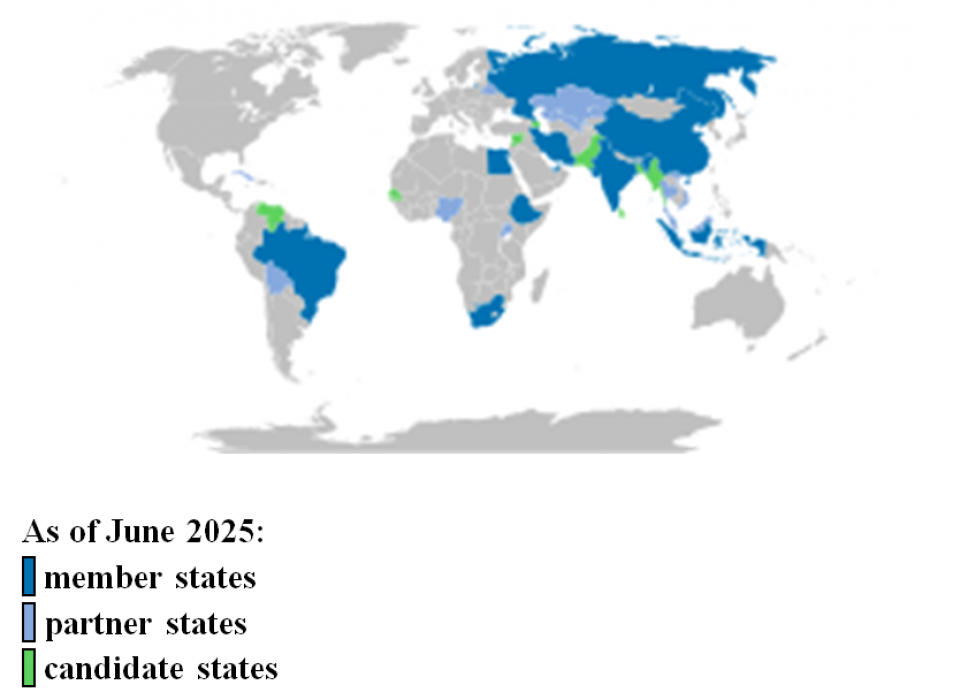
Catalytic Versus Cataclysmic
Humanity has reached a point of mutual deterrence. Deterrence drives diplomacy, prompting us to pursue negotiations and dialogue rather than risking nuclear annihilation. Diplomacy is catalytic—transformative —while military action is cataclysmic—destructive and catastrophic.
The Building the Bridge Foundation promotes a multipolar world to encourage cooperation instead of conflict. Do you now understand why we will petition the world by collecting billions of signatures to nominate Trump, Putin, Jinping, and Modi to share the 2026 Nobel Peace Prize? We’d like them to work together, not against each other.
Enjoy your weekend.
Abraham A. van Kempen
Senior Editor
Building the Bridge Foundation, The Hague
A Way to Get to Know Each Other and the Other
GEOPOLITICS AND THE RISE OF EURASIA: FROM MARITIME HEGEMONY TO MULTIPOLARITY
- Following the decline of the ancient Silk Road, European maritime powers started connecting the world in the early 16th century.
- After half a millennium of a Western-focused world, Russia, China, and other Eurasian nations are now forging their own paths in technology, industry, energy, transportation, banking, and currency, fostering greater independence.
- Russia’s decision to withdraw from the Greater Europe project in 2014 and instead adopt the Greater Initiative signaled the end of 300 years of a Western-focused approach to progress and modernization.

Watch the Video Here (36 minutes, 19 seconds)
Host Prof. Glenn Diesen
Substack.com
30 October 2025
The Foundations of Geopolitics: Eurasia as the Pivot
Geopolitics studies how geography influences power and strategy. Eurasia, home to the largest population, resources, and landmass, is crucial. Many believe controlling Eurasia equals global dominance. This section examines how great powers vie for control over Eurasia, shaping global shifts and future relations.
Historical Connectivity: The Ancient Silk Road
Eurasia's Silk Road historically linked land and sea routes that spurred cultural and technological exchanges, mainly used by nomads. The Mongol Empire expanded and maintained it, but its decline in the 14th century ended this golden era. Later, maritime routes became more important as Europe's naval power rose in the 16th century.
The Emergence of European Maritime Powers
Explorers like Columbus, Magellan, and Da Gama reshaped the world by establishing sea routes and creating new power dynamics. European nations gained control of key ports and chokepoints. Technological innovations strengthened European dominance, which Adam Smith criticized for its potential for exploitation. He hoped for less power inequality and more mutual economic benefits.
From Trade Post Empires to Global Hegemony
European maritime powers set up trade post empires mainly to control shipping routes and ports, focusing on strategic interests rather than land expansion. These grew into competitive empires that occasionally clashed. By the 19th century, Britain had become the world's leading maritime power, leading Pax Britannica and dominating the seas and trade. Later, the US overtook Britain as the leading maritime nation.
The Geopolitics of Eurasia: The Rise of Land Powers
The Napoleonic Wars altered Eurasia's dynamics, with Russia's alliance with Napoleon and expansion toward British India raising British concerns. Eurasia's control relied on land forces like Russia, not only sea power. The British-Russian 'Great Game' centered on trade routes and resources in Central Eurasia. Russia’s victories and territorial gains challenged British dominance, sparking conflicts such as the Crimean War. Russia’s weaker industry and infrastructure hindered its defeat, prompting modernization efforts.
The Heartland Theory and Strategic Rivalries
During the late 19th and early 20th centuries, British geopolitics grew, with Mackinder’s Heartland Theory gaining attention. Mackinder believed controlling Eastern Europe was vital to dominating the "heartland"—the Eurasian core—and influencing the "world island' and the planet. He emphasized the role of transcontinental railroads in challenging maritime power by enabling land links across Eurasia.
Land Versus Maritime Powers: Shaping Strategy
Mackinder’s ideas shaped British and American strategies. In the US, policies aimed at Eurasian containment focus on securing maritime leadership and blocking hostile powers from controlling Eurasia. Strategies like the dual island chain helped contain land-based powers. Russian Eurasianists, like Savitsky, envisioned a united Eurasian front to challenge Western maritime dominance by supporting alliances and opposing divide-and-rule tactics.
Post-Cold War Developments and US Strategy
After the Soviet Union's collapse, Russia sought closer ties with Western countries and integration into Europe. Meanwhile, the US aimed to strengthen its global leadership, as per the Wolfowitz Doctrine, to prevent challenges to US and Western dominance in Eurasia, control key regions and energy routes, and deter rivals.
Brzezinski’s Vision of American Dominance
Zbigniew Brzezinski, a strategic advisor, believed America's influence in Eurasia depended on dividing powers and allies’ dependence on security guarantees. The US maintained leadership through alliance networks, shaping the world with subordinate vassals and controlled rivals. Brzezinski saw Russia as fragile and supported dividing it into regions, while backing US-led initiatives like the Silk Road to weaken Eurasian ties and reinforce American leadership.
The Shift in World Order: Russia and China Align
Two key moments in 2014 brought significant changes: Ukraine's government was overthrown, ending Russia’s hopes of becoming part of and participating in a Greater Europe, and China challenged the US-led economic order. In 2013, China launched the Belt and Road Initiative to reconnect with Eurasia and embraced ambitious plans. Meanwhile, Russia distanced itself from the West and supported the Greater Eurasian Initiative, seeking growth and closer ties with China and other eastern nations.
Emergence of Greater Eurasia and Multipolarity
Russia and China’s growing alliance is shifting global influence by connecting Eurasia through infrastructure, trade, and finance. This change fosters a more balanced, multipolar world, with projects like the Eurasian Economic Union and China’s Belt and Road expanding into the digital, energy, and financial sectors through groups such as the Shanghai Cooperation Organization and BRICS. A dynamic era of change and cooperation in Eurasia!
Challenges to Maritime Hegemony and the Decline of US Dominance
Western powers' attempts to hinder Eurasian integration by splitting alliances and imposing sanctions have failed. Instead, they have encouraged Eurasian countries to diversify and boost cooperation. As US influence wanes, it depends more on financial pressure, technology bans, and asset seizures. But these actions erode trust and push nations to find alternatives more quickly.
Implications for Europe and the West
Europe faces a critical decision: stick with traditional dominance or embrace a multipolar world. Hesitation hampers growth and security. Past mistakes, such as seizing Russian funds and disrupting supply chains, have hurt interests and fostered suspicion. Embracing multipolarity can boost prosperity and safety, despite resistance and outdated beliefs.
The Eurasian Perspective and the Path Forward
Contemporary Russian sentiment, as reflected by Dostoyevsky, recognizes Russia’s unique Eurasian identity. Moving away from a Western focus is crucial to overcoming past hostilities. Geography influences global affairs, and we are at a pivotal moment. Despite efforts to prevent it, a new Eurasian order is emerging, signaling an exciting change.
Economic Disruptions and the Transition to Multipolarity
We're witnessing a shift from EU-US/NATO-focused globalization to a decentralized, Eurasian-led model, causing instability across the economy, politics, and security. Economic pressures sometimes spark conflicts. These shifts were expected as powerful nations prefer control, creating global dependence. The era of the "benign hegemon" has given way to a more Eurocentric-Americanized world.
The Nature and Consequences of Hegemony
Hegemons are temporary. The US economy has become more rent-seeking, financialized, and debt-heavy, and has lost competitiveness. Mistakes are tolerated until a breaking point, while other nations advance, casting doubt on the hegemonic system's sustainability. As decline begins, the hegemon shifts from promoting openness to using economic pressure, restricting access to technology, energy, and finance, and eroding international trust.
Strategies of Division and Control
The declining hegemon aims to divide emerging powers like Germany, Russia, China, India, Iran, and the Gulf States. It pressures allies to limit cooperation with rivals, boosting dependence and shifting influence. Over time, partners see that clinging to a fading hegemon isn't beneficial, prompting diversification of economic ties or risking consequences.
The Path to Multipolarity
Everyone, even the declining hegemon, benefits from supporting a multipolar world. The dominant power's ambitions face resistance from other nations working together, straining resources and causing instability. A modest role focused on socio-economic recovery is sustainable, allowing the hegemon to rebuild and reduce opposition, fostering a more balanced and peaceful global landscape.
The End of Western Dominance and the Opportunity for Equality
The rise of Eurasia marks a new chapter, ending 500 years of Western leadership that began with European maritime ventures in the 16th century. While this shift may unsettle the West, it also creates opportunities for more balanced, cooperative global relationships. Adam Smith highlighted the benefits of global connectivity, noting its potential to unite people and foster mutual respect through knowledge sharing and trade. However, he warned of the risks posed by uneven power.
Principles for Eurasian Integration
Eurasian integration should balance strength with openness, resisting dominance and maintaining a friendly stance towards the West. It should avoid bloc politics and instead foster harmonious, multipolar partnerships that consider all regions' interests.
Summary
Professor Glenn Diesen highlights the shift from Western dominance to Eurasia's rise. He calls for global fairness and equality, emphasizing dialogue, transparency, and mutual respect. His message underscores inclusive decision-making, strong legal systems, diverse economies, and environmental care. It shows that global cooperation and shared values can enhance stability, prosperity, and peace.
Let's embrace this future together!
What is the Side of the Story that is Not Yet Decisive? Edited and annotated by Abraham A. van Kempen
RUSSIA’S NEW WEAPONRY TO ENSURE STRATEGIC PARITY FOR THE WHOLE CENTURY – PUTIN
Moscow does not pose a threat to anyone, but the Russian president has stated that it is steadily expanding its nuclear arsenal.
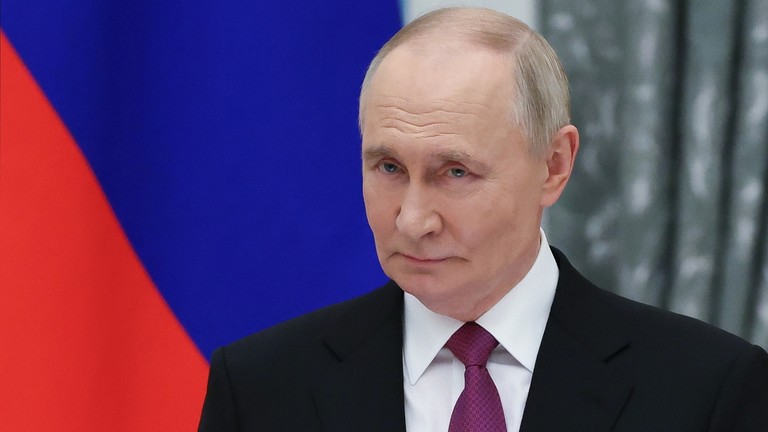
© Sputnik / Vyacheslav Prokofyev
HomeRussia & FSU
4 November 2025
President Vladimir Putin stated that Russia’s newest nuclear assets, the Burevestnik cruise missile and Poseidon underwater drone, are intended to ensure "strategic parity" throughout the 21st century.
The Russian leader spoke on Tuesday at a ceremony honoring those involved in developing new advanced weaponry. He emphasized that the recent successful tests of the latest systems are the result of the "long-announced work" and should not be unexpected.
“Our country is not threatening anyone. Russia, like all other nuclear powers, is developing its nuclear and strategic potential,” Putin said.
The president stated that the Burevestnik nuclear missile has shown an unmatched range, while the Poseidon drone can reach speeds several times faster than any current surface vessel. Putin also disclosed that the development of next-generation weapons is underway, noting that Russia is working on a supersonic missile powered by a propulsion system similar to that of Burevestnik.
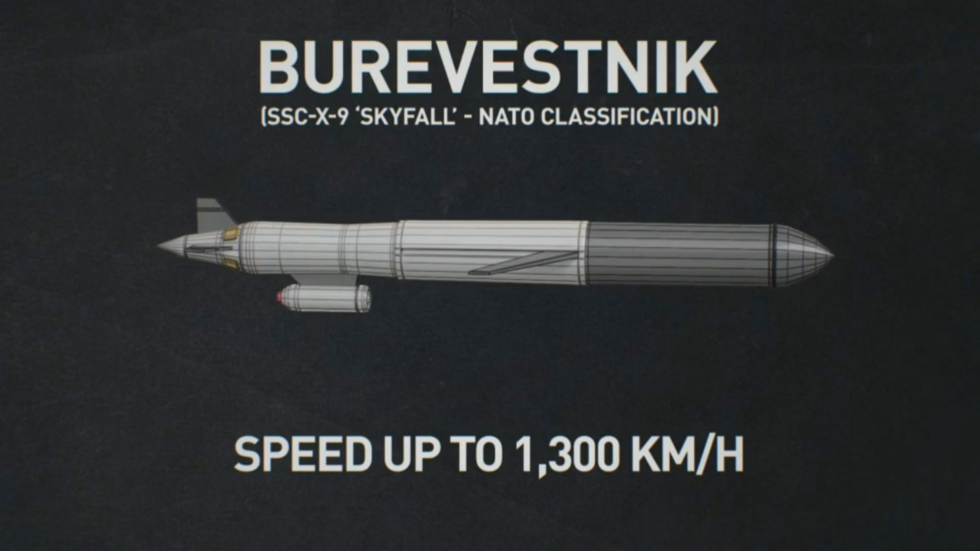
READ MORE: Putin reveals details about Burevestnik missile’s nuclear engine
“The result you have achieved is, without exaggeration, of historic significance for our people. It ensures security and strategic parity for decades to come – one could safely say, for the entire 21st century,” Putin told those being recognized for awards.
The president highlighted that the technologies created for new weapons systems hold significant promise for civilian use.
Specifically, the compact nuclear power unit could be employed to establish power plants in the Arctic and for deep-space and near-space exploration.
Russia successfully tested its new nuclear-powered Burevestnik cruise missile in mid-October.
During the test, the missile traveled over 14,000 km and remained airborne for approximately 15 hours, according to the military.
The Burevestnik features a nuclear-powered turbojet engine, giving it essentially unlimited range and enhancing its global strike capabilities.
The test of another new weapon, the Poseidon, was announced shortly after.
According to the military, a nuclear-powered, torpedo-shaped drone was launched from a submarine, activated its engine, and submerged for an unspecified period.
READ MORE: Russia launches new nuclear submarine (VIDEO)
Early this month, Russia also launched a new nuclear submarine, the 'Khabarovsk', explicitly designed to carry Poseidon drones.
BUILDING – NOT BURNING – THE BRIDGE
By Abraham A. van Kempen
7 November 2025
Prof. Glenn Diesen’s discussion with Stanislav Krapivnik, featured on the linked video immediately following this essay, examines ongoing issues between Russia and the West, including:
- Foreign influence
- Conflicting narratives
- Long-standing grievances
Insights from both highlight how suspicion and oversimplification hinder dialogue.
The conversation emphasizes the complexity of shifting alliances, Europe's militarization, and political movements.
It advocates openness and understanding to bridge the divide.
Russia and the West: Modernization, Alliances, and the Widening Divide
The relationship between Russia and Western countries is vital in 21st-century geopolitics. Professor Glenn Diesen discussed modernization, shifting alliances, and the Russia-West divide with Stanislav Krapivnik, a former U.S. Army officer now in Russia.
Drawing on Krapivnik’s experiences, the talk highlights Russia’s European history, its move East, and the implications for Europe’s militarization and division. Here are key points from this balanced discussion.
Modernization and Alliances: Krapivnik’s Insights
Krapivnik’s insights reveal Russia's modernization, rooted in history with Europe, and aimed at bridging gaps with the West. The process is complex, shaped by Russia's unique culture, politics, and history. The Western model, once admired, now faces skepticism, prompting reevaluation of alliances. He notes Russia’s shift from Western to Eastern partnerships driven by external factors and strategic goals to expand ties, reduce reliance on Western sanctions, and avoid political isolation.
Russia’s Europeanization and Pivot East: Historical Context and Recent Shifts
This discussion outlines Russia’s long-standing goal of Europeanization, dating back to Peter the Great's reforms. Over time, Russia balanced adopting European standards with preserving its unique identity. Krapivnik notes that after the Cold War, there was renewed interest in closer integration, but hopes faded as concerns about Western influence grew.
A notable shift has emerged, as Krapivnik states that Russia’s pivot to the East, especially toward China and other Asian nations, is changing its economic and strategic outlook. This move, driven not only by Western sanctions but also by Russia's effort to modernize and expand its influence independently of Western approval or integration.
Militarized Divisions in Europe: Impact on Regional Stability
Diesen and Krapivniks highlighted the increasing militarization in Europe. Krapivnik warns that expanding military infrastructure and alliances, such as NATO, may exacerbate divisions among European countries, foster suspicion, hinder dialogue, and increase the risk of escalation. This leads to a fragmented, unstable continent dominated by competition and mistrust.
Personal Stories from Georgia: Firsthand Experiences and Observations
Krapivnik’s stay in the Republic of Georgia, Stalin's birthplace, offers a backdrop for his observations. He shares anecdotes about regional loyalties and global power influences. As an ex-military officer, he saw how local desires often clashed with those of larger nations. His Georgia experiences show that alliances and identities are fluid and contested, complicating international stories.
Changing Political Landscape: Recent Protests and Internal Dynamics
The discussion covers Russia's evolving political landscape. Krapivnik notes the West often sees protests as threats to regime stability, but they are more complex. They reflect public frustrations and can be influenced by external groups. To truly understand protests, one must consider societal trends and history.
Influence of Foreign Players: The Role of External Actors
Foreign influence is a recurring theme. Krapivnik notes that both Russia and the West see each other as interfering through media, civil society, or politics. This mutual suspicion fuels a cycle that hinders genuine dialogue. Foreign involvement in protests and political movements reflects and deepens divisions.
Ongoing Misunderstandings and Tensions: Analyzing Russia-West Relations
Krapivnik and Diesen highlight that misunderstandings between Russia and the West have persisted for centuries. They note that conflicting narratives, historical grievances, and communication issues often intensify tensions. Krapivnik also warns that oversimplified perceptions of Russia in Western discussions—and vice versa—can hinder real understanding. He urges all parties to try to consider each other's perspectives, interests, and concerns more thoughtfully.
Conclusion: Key Takeaways and Implications
The conversation between Prof. Glenn Diesen and Stanislav Krapivnik offers valuable insights into the evolving relationship between Russia and the West.
- What used to be a straightforward path to modernization has now become a point of contention.
- As alliances change, they reveal more profound uncertainties about who we are and where we're headed.
- Factors such as Europe's increasing militarization, external influence, and the unpredictable course of political movements underscore the complexity of today's landscape.
Krapivnik’s personal stories bring a human touch to these wide-ranging trends, reminding us that these issues are not just strategic but also very personal. Ultimately, the conversation stresses the importance of fostering better understanding, encouraging open dialogue, and being willing to move beyond old narratives to close the growing gap.
STANISLAV KRAPIVNIK: DANGEROUS ENDGAME IN THE NATO-RUSSIA PROXY WAR
- Professor Glenn Diesen discusses modernization, shifting alliances, and the Russia-West rift with Stanislav Krapivnik, a former U.S. Army officer living in Russia.
- Krapivnik discusses Russia’s historical Europeanization goals, its shift eastward, and divisions across Europe.
- He shares personal stories from Georgia, describing political changes, protests, and foreign influence, highlighting misunderstandings and tensions with the West.

Watch the Video Here (71 minutes, 29 seconds)
Host Prof. Glenn Diesen
Substack.com
4 November 2025
Interview with Stanislav Krapivnik: Perspectives on Georgia, Ukraine, Europe, and Russia
Welcome back. Today, we're joined by Stanislav Krapivnik, a former U.S. Army officer now living in Russia. He provides a unique military perspective on the U.S. and Russia.
Stanislav Krapivnik, a former US Army officer, supply chain executive, and military-political expert now in Russia, was born in Lugansk (Ukraine) during Soviet times. He migrated to the US as a child and served in the Army. Krapivnik explains misunderstandings between the West and Russia and warns that further escalation could provoke a stronger Russian response.
Background and Personal History
Stanislav says moving to Russia was like returning home rather than just relocating. His family moved to the U.S. in 1979 due to his father's dissident activities. Later, he returned to Russia with his Georgian wife. In 2010, they settled in Greenfield, while Stanislav worked for Cameron International in Yekaterinburg, Ural.
Experiences in Georgia
Stanislav has visited Georgia multiple times for personal and professional reasons. He was particularly moved when he accompanied US Ambassador Jack Matlock, who was deeply impressed by the changes in Tbilisi after many years abroad. In 2002, Stanislav worked as a military advisor in Belize and has returned to Georgia multiple times since then for business and family visits. Recently, he observed the elections and noted that the initial protests were calm and relaxed, resembling a mellow jazz concert rather than a spirited rally.
Observations on Protests in Georgia
Stanislav pointed out that the protests didn't seem spontaneous, especially in front of Tbilisi's parliament, where EU flags and English-language signs were common. He observed that many participants weren’t locals, including Russian liberals and Ukrainians. Throughout the events, he stayed near the police and saw some foreign activists—Italians and French—who were advocating for liberal democracy, supported by international groups. Stanislav argued that only Georgian citizens should have the right to protest, estimating that about 20% to 30% of the demonstrators were foreigners.
Democracy and Foreign Influence
Stanislav examined the evolution of democracy in Georgia, noting the growing role of international NGOs backed by foreign governments and intelligence agencies. He praised the Georgian government's careful strategy to pursue EU integration while avoiding direct conflicts with Russia. He also acknowledged the difficulty of maintaining this position, as Western policies often demand precise alignment, complicating neutrality.
Georgia's Geopolitical Position
Stanislav shared some of the challenges Georgia faces as it tries to manage its relationships with both Russia and the West. He noted that when Georgia took part in NATO exercises, Russia responded by formally recognizing Georgia's borders with Abkhazia and South Ossetia. He felt that this step was unhelpful for Georgia, as it pushed the country further away from both Moscow and Brussels.
Comparisons to Other Conflicts
Stanislav drew a thoughtful parallel between the situation in Georgia and that of Syria, emphasizing the importance of navigating geopolitical conflicts carefully. He highlighted the potential consequences for leaders who focus on pleasing the West at the expense of their trusted allies, noting that this strategy can sometimes lead to personal and national setbacks.
Ukraine: The War of Attrition
The discussion shifted to the ongoing war in Ukraine. Stanislav mentioned that roughly 2.5 years ago, the conflict evolved into a war of attrition. Initially, Russia caused extensive damage to Ukraine's military and took control of large territories. He also discussed Ukraine's military readiness before the invasion and highlighted the failed diplomatic negotiations before the conflict.
Russian Military Operations
Stanislav shared insights on Russian military strategy, highlighting the early limitations of artillery and the subsequent reorganization of Russian forces. He also covered the Ukrainian counter-offensive and the heavy casualties incurred in efforts to retake small, strategically minor areas.
Attrition and Casualties
The attritional phase of the war brought heartbreaking losses for Ukraine. Stanislav shared that 1.8 million Ukrainians had sadly lost their lives, and many others were wounded or missing. He also mentioned that desertion rates were rising and that the Ukrainian military units were facing challenges, reminiscent of times when armies become overstretched. Together, these stories highlight the challenging circumstances Ukraine faces during this difficult period.
European and American Involvement
Stanislav pointed out how the roles of the United States and Europe are evolving in the conflict. He mentioned that the U.S. is stepping back while Europe is becoming more eager to take on greater responsibility. He cautioned against depending on "Wunderwaffe"—miracle weapons—hoping they could drastically change the course of the war. He emphasized that only a nuclear escalation could genuinely make a big difference on the battlefield, and such a move could have serious consequences for Europe.
Russia's Historical Perspective and Response to Escalation
Stanislav delved into the core cultural and historical factors that shape Russian perspectives on war and its relationship with the West. He described Russia as being initially cautious but ready to respond quickly and powerfully if provoked. He also highlighted that a slow escalation from the West could trigger a swift response and an intense Russian reaction, citing historical examples.
Impact on Energy Infrastructure
The interview covered targeting energy infrastructure. Stanislav explained that attacks on Russian refineries mostly damaged storage facilities, which are easily replaced and not crucial to the main fuel supply. He also emphasized Russia's vital role as a major exporter of oil, gas, and other commodities and noted that Europe has suffered losses due to sanctions.
Economic and Cultural Shifts
Sanctions and the ongoing conflict are accelerating Russia's economic shift towards the East, leading to less dependence on Europe and stronger ties with China and other Asian countries. Stanislav highlighted a generational change of Russian attitudes, noting increased investment in local industries and a renewed sense of national pride and independence.
Conclusion and Contact Information
Stanislav wrapped up by sharing some thoughtful reflections on the ongoing war of attrition between Russia and the West, which spans military, economic, cultural, and political struggles. He expressed confidence that Russia is ready for a long-lasting conflict and anticipates that European countries may face more challenges ahead. To stay connected and follow his updates, he shared his contact information: YouTube (Mr. Slavic Man), X (Stas Krapivnik), and his two Telegram channels—Stas Todai Abratna (Russian) and Stas was there (English).
MUTUAL NUCLEAR DETERRENCE AND ITS ROLE IN DIPLOMACY: MULTIPOLAR VS. UNIPOLAR WORLDS
By Abraham A. van Kempen
3 November 2025
Comparative Analysis of Diplomatic Catalysis in Different Power Structures
Mutual nuclear deterrence influences international relations and diplomacy, with its role varying in multipolar versus unipolar worlds. This analysis compares its impact on diplomatic efforts in both contexts.
Mutual Nuclear Deterrence Defined
Mutual nuclear deterrence happens when several states have credible nuclear arsenals able to inflict unacceptable damage on each other, deterring direct conflict. This vulnerability encourages caution and often leads to diplomatic negotiations rather than war.
Diplomacy in a Unipolar World
A unipolar world features the dominance of one superpower, usually with superior military and nuclear strength compared to others. In this setting:
- Diplomatic Leverage: A dominant power can leverage its nuclear superiority to deter challenges, often setting the terms and exerting considerable influence on global affairs.
- Limited Peer Negotiation: When there are few or no nuclear peers, the motivation for authentic diplomatic efforts decreases, as the superpower might rely more on coercion or acting alone.
- Risk of Instability: Smaller nuclear states might feel threatened and act unpredictably, but the overall system discourages open conflict because of the strong deterrent posed by the unipole.
In summary, nuclear deterrence prevents large-scale war, but diplomacy is often asymmetrical, with the superpower dominating the agenda.
Diplomacy in a Multipolar World
A multipolar world has many states with similar nuclear capabilities, significantly changing the dynamics of deterrence and diplomacy.
- Complex deterrence involves not just bilateral relations but also the network of alliances among nuclear powers.
- Increased risks demand that states build strong diplomatic channels, such as hotlines and multilateral frameworks, for effective crisis management.
- Balance of Power Diplomacy involves countries working together through negotiations, compromises, and shifting alliances to address security challenges, preventing any one nation from dominating.
- A multipolar system encourages multilateral arms control, transparency, and confidence-building measures to reduce the risk of nuclear conflict.
In a multipolar world, mutual nuclear deterrence acts as a key motivator for diplomacy, prompting states to communicate, negotiate, and collaboratively manage risks.
Key Differences: Catalytic Impact on Diplomacy
.png)
Summary
This essay examines how mutual nuclear deterrence in a multipolar world promotes
- Stronger diplomacy
- Encouraging states to focus on dialogue, transparency, and cooperation to uphold stability and avert conflict.
It highlights the importance of flexible strategies, inclusive approaches, and innovative risk-mitigation tools as the global nuclear landscape becomes more complex. It also emphasizes trust-building, effective communication, and international institutions in maintaining peace and addressing new threats.
Mutual nuclear deterrence promotes stronger diplomacy in a multipolar world than in a unipolar one. In a unipolar system, the dominant power’s ability to deter reduces the need for genuine diplomacy. In contrast, a multipolar setting’s complex deterrence network and misunderstanding risks push states to prioritize diplomacy, dialogue, and multilateral cooperation to maintain stability and prevent nuclear conflict.
This foreshadows the need for effective communication, confidence-building, and inclusive frameworks among nuclear-armed states. Multiple actors can lead to miscommunication and escalation. Multipolar deterrence challenges current strategies and encourages new global security approaches.
Policymakers must continually adapt strategies to changing multipolar deterrence dynamics, requiring technical safeguards, diplomacy, and trust-building. Prioritizing transparency and dialogue helps manage uncertainties and stabilize the international system.
As advanced technologies spread and new nuclear states emerge, it’s vital to review and update deterrence strategies regularly. Using innovative risk-mitigation tools and promoting cooperation through joint research, intelligence sharing, and exercises can improve understanding and reduce threats.
Historical instances demonstrate that periods of multipolarity tend to coincide with heightened diplomatic efforts and the creation of new international institutions. Such organizations offer platforms for dialogue and cooperation, helping to lower tensions and foster enduring peace. By studying history, we can better shape current approaches to strengthen global security, particularly as the nuclear landscape grows more intricate.
Recognizing that multipolar deterrence requires changes in strategy and conflict prevention methods is crucial. Diplomatic summits, verification, and engaging non-nuclear actors can enhance stability and reduce miscommunication. A flexible, proactive approach is essential amidst a changing nuclear landscape.
Conclusion
Shifting from a unipolar to a multipolar nuclear landscape changes power structures and requires states to reevaluate doctrines. This environment demands flexibility, dialogue, and diverse viewpoints to sustain deterrence. Through diplomatic efforts and collective expertise, the international community can better prevent escalations, fostering a safer global future.
COMPARING THE MULTIPOLAR EURASIAN WORLD ORDER AND THE UNIPOLAR WESTERN WORLD ORDER
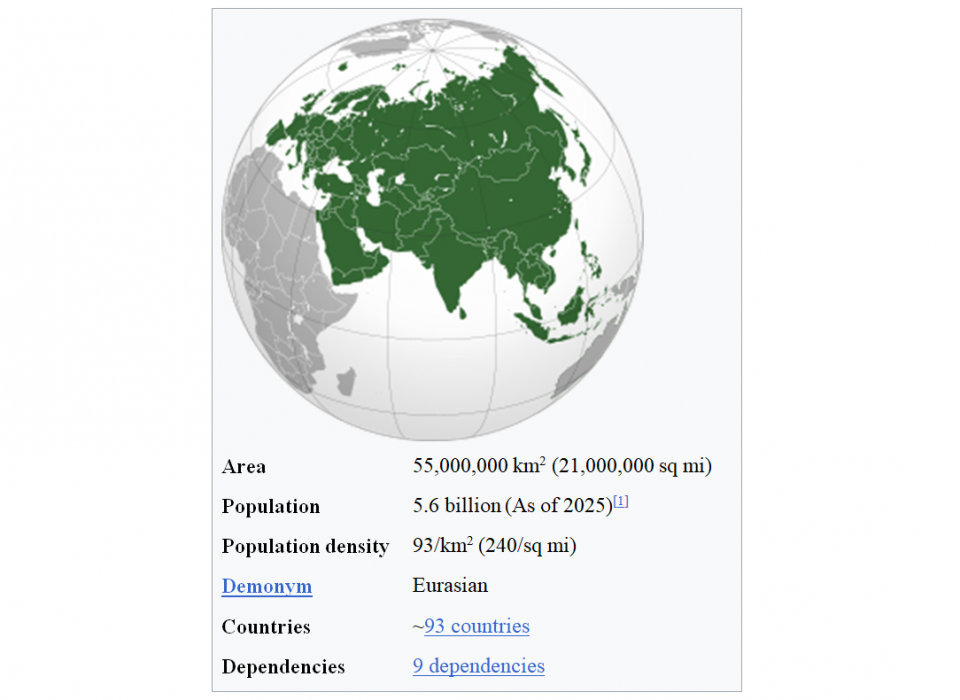
By Abraham A. van Kempen
3 November 2025
A Comprehensive Analysis of Global Power Structures
Throughout history, the distribution of global power has shaped the international system. In the late 20th and early 21st centuries, the world was mainly unipolar, led by the United States with support from the EU and NATO. Recently, there's been a shift toward a multipolar Eurasian order, adding new complexities to international politics. This overview compares these two configurations, highlighting their features, differences, and impacts.
Defining the World Orders
- Unipolar World Order: Dominated by one main power or bloc—the US, EU, and NATO—that sets rules for global governance, security, and economics.
- Multipolar Eurasian World Order: Marked by multiple influential states like China, Russia, India, and others, each asserting interests and shaping regional and global affairs.
Key Features and Structures
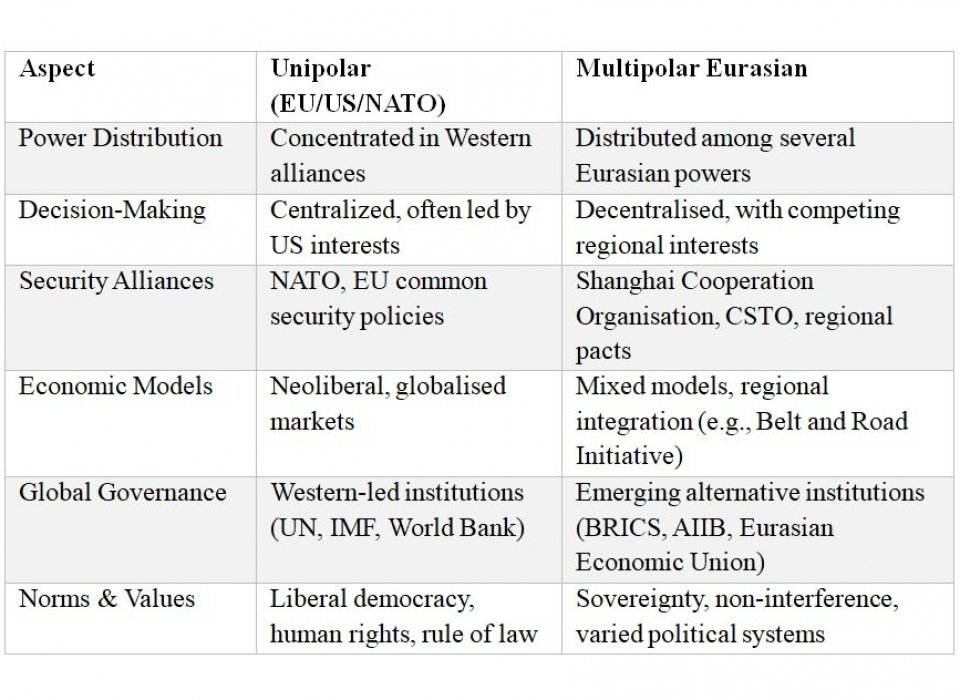
Potential Implications
- Stability and Competition: Multipolarity may increase competition and reduce predictability, but it also offers checks to prevent hegemony.
- Regionalism: Regionalism's growing influence may lead to localized responses to global challenges but could also fragment international cooperation.
- Global Governance: A move toward multipolarity might lead to reforms in global governance structures, making them more inclusive but less unified.
Conclusion
The transition from a unipolar world—where the US, EU, and NATO dominated—to a more diverse, multipolar Eurasian system signifies a fundamental shift in global power distribution.
While the unipolar structure offered stability and clear leadership, adopting a multipolar approach introduces diversity, healthy competition, and the potential for more balanced international relations.
Policymakers, businesses, and civil society must understand these shifts as they navigate our changing global environment.
PROF. JENNIFER KAVANAGH: INSIDE KIEV’S ELITE - PERSPECTIVES ON WAR AND PEACE
Discussions within Ukraine – Perspectives from Ukraine
The Ukraine conflict persists due to challenges in negotiations, public opinion, and battlefield issues, with both sides hesitant to concede amid survival concerns.
- Media reports maintain public support amid rising fatigue and unrest, while Ukraine's manpower shortages weaken its military.
- Hope for peace relies on gradual steps like ceasefires and incentives, with external influences from the U.S. and Europe remaining important but divided.
- Significant breakthroughs are unlikely now, and diplomatic discussions are met with cautious optimism.

Watch the Video Here (1 hour, 03 minutes, 03 seconds)
Host Prof. Glenn Diesen
Substack.com
22 October 2025
Interview with Prof. Jennifer Kavanagh: Ukraine War, U.S. Policy, and Prospects for Peace
Prof. Kavanagh recently visited Ukraine to meet with senior officials and gauge their views on politics, the military, and intelligence. As the war worsens, there's growing concern that Ukraine might collapse without a peace deal. Present peace proposals are unappealing to Ukraine, complicating negotiations.
Please continue reading … scroll down to the video.
HOW DICK CHENEY MADE ME A BETTER REPORTER
The late vice president’s lies and abuses of the Constitution spurred those close to him to tell the truth.
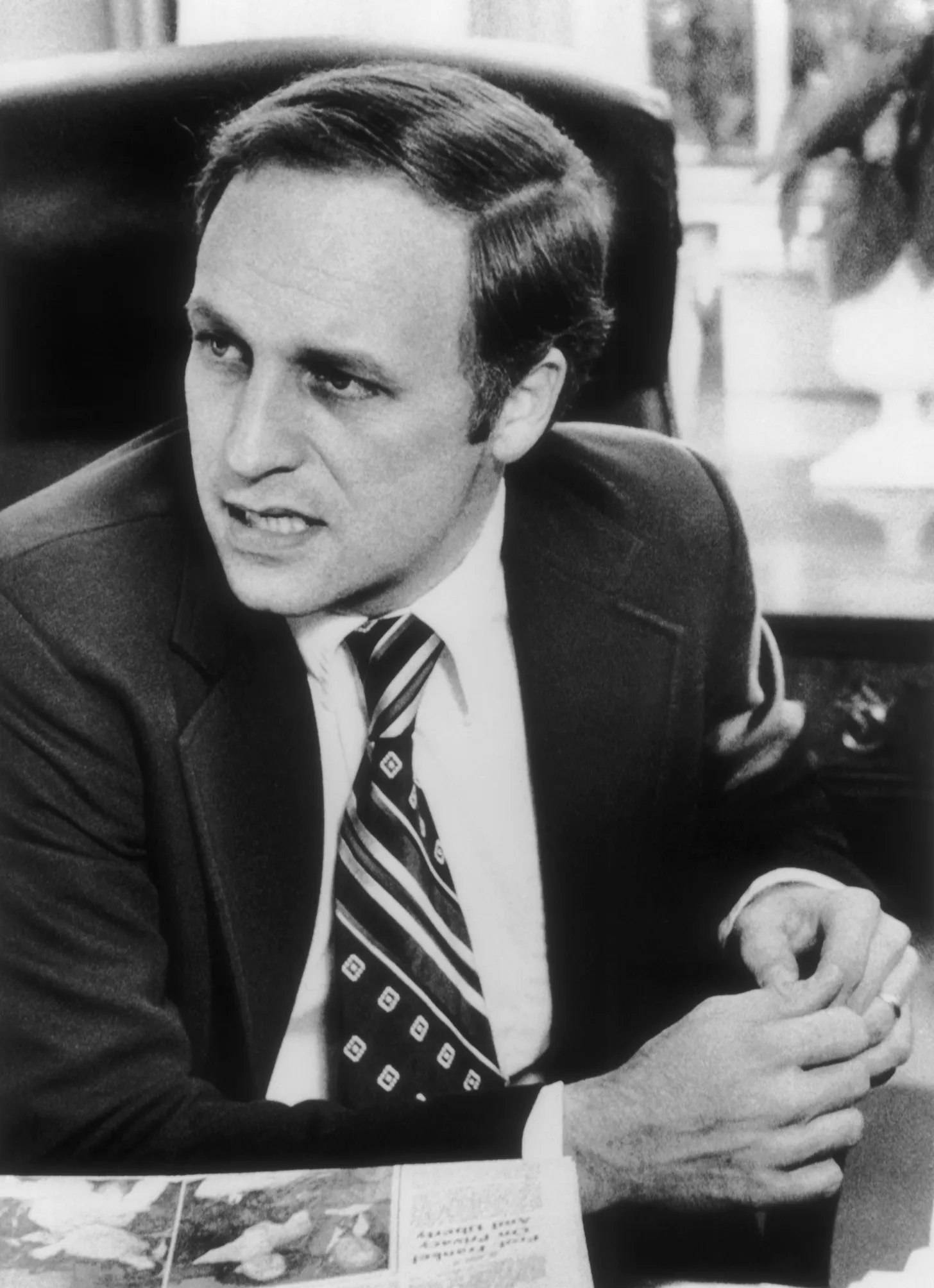
Richard B. Cheney at his desk in the White House after becoming chief of staff to President Gerald R. Ford in 1975. / Bettmann via Getty Images.
By Seymour Hersh
Substack.com
5 November 2025
I was up late reading a book on the horrors of Guantánamo Bay, a result of Bush and Cheney’s policies after 9/11. I woke to find Cheney, a significant vice president, had died. I had reported critically on Cheney for years, with help from insiders who believed there were better responses to 9/11 than inflicting more horrors.
Cheney was at least a co-equal to Bush and arguably the most effective vice president in history. Historians will decide this in the future. I have some insight into his office, though I never met him. We crossed paths over a decade after 9/11, but Cheney ignored my hand. Known for a failing heart, a new treatment extended his life beyond expectations while he continued hunting and fishing in Wyoming. He told friends his new electronic heart worked fine, except it turned on the coffee maker when he entered the kitchen.
BUILDING THE BRIDGE! | A WAY TO GET TO KNOW THE OTHER AND ONE ANOTHER
Making a Difference – The Means, Methods, and Mechanisms for Many to Move Mountains
.jpg)
Photo Credit: Abraham A. van Kempen, our home away from home on the Dead Sea
By Abraham A. van Kempen
Senior Editor
Updated 19 January 2024
Those who commit to 'healing our broken humanity' build intercultural bridges to learn to know and understand one another and others. Readers who thumb through the Building the Bridge (BTB) pages are not mindless sheep following other mindless sheep. They THINK. They want to be at the forefront of making a difference. They're seeking the bigger picture to expand their horizons. They don't need BTB or anyone else to confirm their biases.
Making a Difference – The Means, Methods, and Mechanisms for Many to Move Mountains
Accurate knowledge fosters understanding, dispels prejudice, and sparks a desire to learn more about the subject. Words have an extraordinary power to bring people together, divide them, forge bonds of friendship, or provoke hostility. Modern technology offers unprecedented possibilities for good, fostering harmony and reconciliation. Yet, its misuse can cause untold harm, leading to misunderstandings, prejudices, and conflicts.
A Free Trial for Life – SUBSCRIBE NOW!

• It's quick and straightforward.
• We won’t ask for your credit card number.
• Just enter your e-mail address to receive your complimentary free-for-life subscription to our newsletter.
• Please include your First and Last Name.
• We won’t share or sell your e-mail address.
_________________________
Related Articles Recently Posted on www.buildingthebridgefoundation.com:
________________________
The views expressed are solely those of the author and may or may not reflect those of the Building the Bridge Foundation
LATEST OPEN LETTERS
-
21-07Freedom
-
20-03Stand up to Trump
-
18-02Average Americans Response
-
23-12Tens of thousands of dead children.......this must stop
-
05-06A Call to Action: Uniting for a Lasting Peace in the Holy Land
-
28-05Concerned world citizen
-
13-02World Peace
-
05-12My scream to the world
-
16-11To Syria and Bashar al-Assad
-
16-11To Palestine
VIRTUAL POST OFFICE
PETITIONS
LINKS
DONATION
Latest Blog Articles
-
17-12Our Wednesday News Analysis | Gaza and the unravelling of a world order built on power
-
16-12Gaza and the unravelling of a world order built on power
-
16-12US plan in Gaza: forced ghettoisation, annexation, mass detention, resource plunder
-
16-12Von der Leyen and Blair still want to boss Palestinians around
-
15-12The Evangelical Pope | The Universal Value of Life
-
11-12Our Friday News Analysis | What the World Reads Now!
-
10-12Our Wednesday News Analysis | A story of a 1930s uprising against British colonialism is key to understanding Gaza today
-
09-12A story of a 1930s uprising against British colonialism is key to understanding Gaza today
-
09-12Netanyahu rules out creation of Palestinian state
-
09-12Israel has shown how to carry out a genocide and get away with it
-
08-12The Evangelical Pope | Humility – the Power of Truth and Love
Latest Comments
 One of the most important and illuminating articles that I …
One of the most important and illuminating articles that I …
Comment by Benjamin Inbaraj And what's wrong here?
After all, there is the homeland …
And what's wrong here?
After all, there is the homeland …
Comment by Isac Boian Does this reinforce or deny my argument that Israel is …
Does this reinforce or deny my argument that Israel is …
Comment by Edward Campbell Many 'say' they support the Palestinian cause but do little …
Many 'say' they support the Palestinian cause but do little …
Comment by Philip McFedries The UN is strangled by the "war for profit" cabal …
The UN is strangled by the "war for profit" cabal …
Comment by Philip McFedries I can't read the printing on the map.
I can't read the printing on the map.
Comment by Philip McFedries Good news!
Good news!
Comment by Philip McFedries

COMMENTS
This article has 0 comments at this time. We invoke you to participate the discussion and leave your comment below. Share your opinion and let the world know.